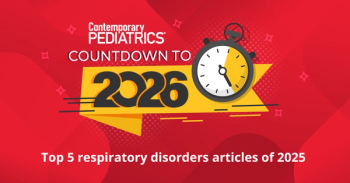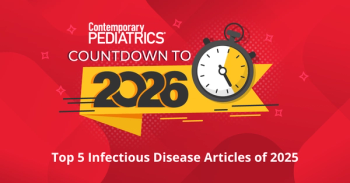
- May 2023
- Volume 40
- Issue 04
First-line use of biologics may lead to favorable outcomes in sJIA
In choosing a treatment plan, many health care providers reported that they initiate treatment of systemic juvenile idiopathic arthritis (sJIA) with a biologic agent most of the time.
A study in patients with new-onset systemic juvenile idiopathic arthritis (sJIA) found most patients treated with biologics had desirable short-term clinical outcomes combined with decreased use of glucocorticoids (GCs).
The 73 patients in the study, who were enrolled at numerous sites, were aged 6 months to 18 years at disease onset and had a fever for at least 2 weeks, arthritis in 1 or more joints for at least 10 days, a rash, and generalized lymphadenopathy, among other symptoms, and had received initial treatment with biologics or nonbiologic GCs. Participants were treated according to 1 of 4 plans chosen by their physicians, which included 2 biologics (interleukin [IL]-1i and IL-6i, both with or without GC) and 2 nonbiologics (methotrexate with or without GC and GC alone); 63 patients (86%) were enrolled in the biologic treatments and 10 (14%) in the nonbiologics. Investigators collected clinical data at baseline and 2 weeks as well as at 1, 3, 6, 9, and 12 months following enrollment.
In choosing a treatment plan, many health care providers reported that they initiate treatment of sJIA with a biologic agent most of the time. They said this is because of the likelihood of the biologic’s effectiveness for systemic features, minimizing systemic glucocorticoids, and the possibility of effectiveness for arthritis. Of the 10 clinical sites that enrolled 3 or more patients, 8 sites assigned all their patients to the biologics.
At 9 months, 57% of patients achieved the primary outcome of clinical inactive disease (CID) without current GC use and 75% had a clinical juvenile arthritis disease activity score at or below 2.5 with no fever and no current GC use. Patients in the biologic and nonbiologic groups had similar outcomes, but 4 of the 6 patients evaluated for CID in the nonbiologic group had initiated biologics during the study. Outcomes at 12 months were similar to those at 9 months. Of the patients receiving biologics who subsequently started methotrexate, 1 of 6 had CID without concurrent GC use at 9 months.
THOUGHTS FROM DR. FARBER:
These findings are not unique to sJIA; monoclonal antibodies are doing for autoimmune diseases what antibiotics did for infectious diseases, only faster. Pediatricians will need to keep up here, especially in areas with a shortage of subspecialists, and not just rely on their knowledge of glucocorticoids.
Reference:
Beukelman T, Tomlinson G, Nigrovic PA, et al. First-line options for systemic juvenile idiopathic arthritis treatment: an observational study of Childhood Arthritis and Rheumatology Research Alliance consensus treatment plans. Pediatr Rheumatol Online J. 2022;20(1):113. doi:10.1186/s12969-022-00768-6
Articles in this issue
over 2 years ago
What are the health care protocols in a postpandemic world?over 2 years ago
2-year-old boy with atopic dermatitis flare on legsover 2 years ago
Study finds link between COVID-19 vaccination and vulvar ulcersover 2 years ago
Highlighting Mental Health Awareness monthover 2 years ago
Building mental fortitude in the competitive student athleteover 2 years ago
What you need to know about the albuterol shortagesNewsletter
Access practical, evidence-based guidance to support better care for our youngest patients. Join our email list for the latest clinical updates.




